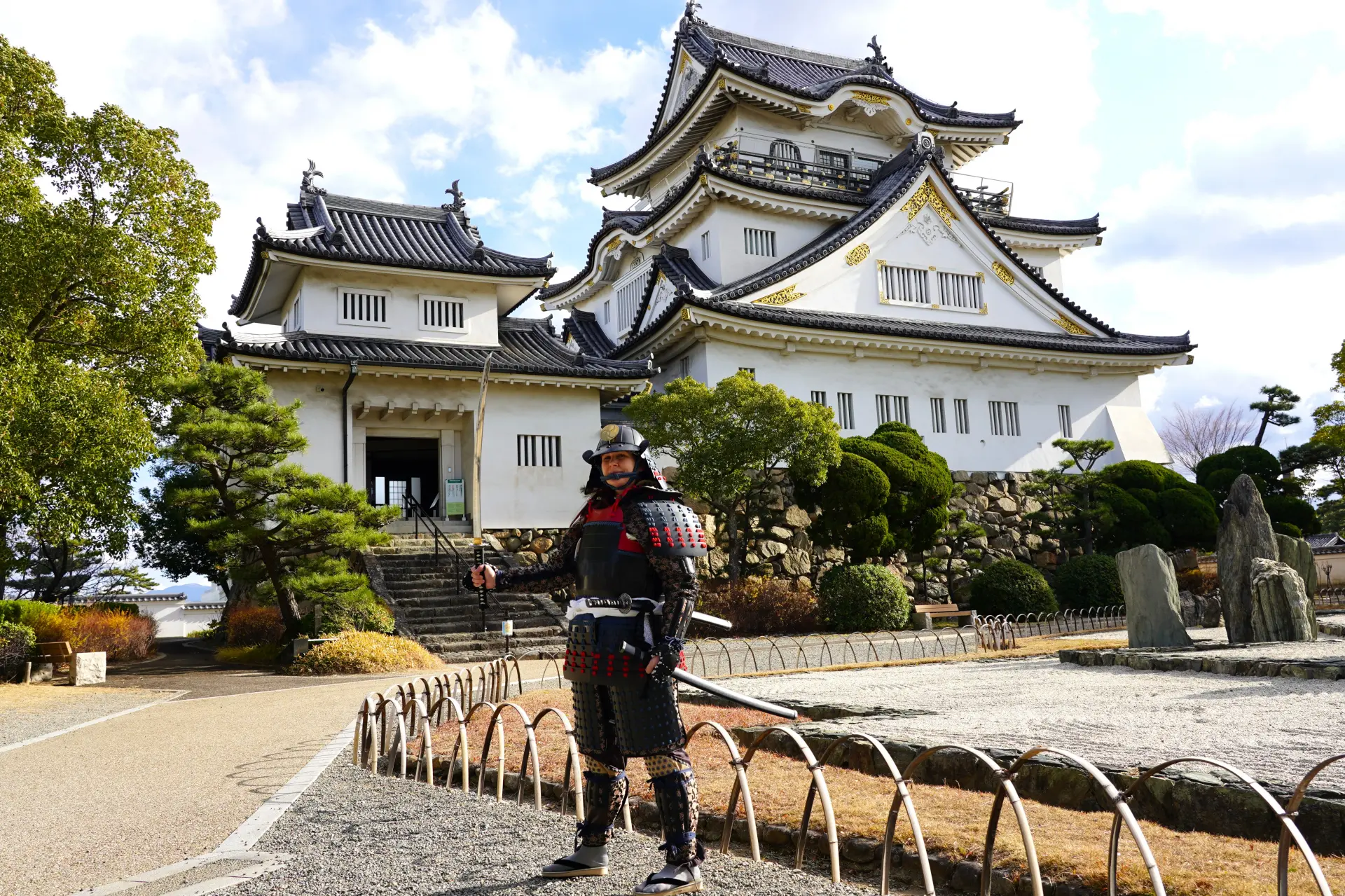
Exploring the Roots of Festivals: A Journey of Understanding Local Bonds and the Preservation of Culture
Last update
Matsuri, meaning "festival," is one of Japan's most vibrant and culturally significant attractions. Traditional festivals full of local character have been passed down through generations in each region, with activities ranging from floats (danjiri) and food stall options, traditional dances, portable shrine processions (mikoshi), to parades featuring historical costumes.These events rely on the cooperation and teamwork of local communities, strengthening bonds and fostering unity.
Additionally, festivals have played a significant role in the development of local cultures. Allow us to introduce a course that will take you on a journey to explore the roots of two particularly vibrant festivals: the "Kishiwada Danjiri Matsuri" and the "Awa Odori." This course offers an opportunity to experience the local culture and provides a valuable experience that will allow you to deeply understand the traditions and history of these regions while feeling the unique charm of these festivals.
Day 1: Exploring Kishiwada
Kishiwada City
Located in southwestern Osaka Prefecture along Osaka Bay, Kishiwada is a medium-sized city (population: 184,000) just a 20-minute train ride from Kansai International Airport.. Key attractions, such as Kishiwada Castle, are within walking distance of Nankai Kishiwada Station.
Kishiwada Castle
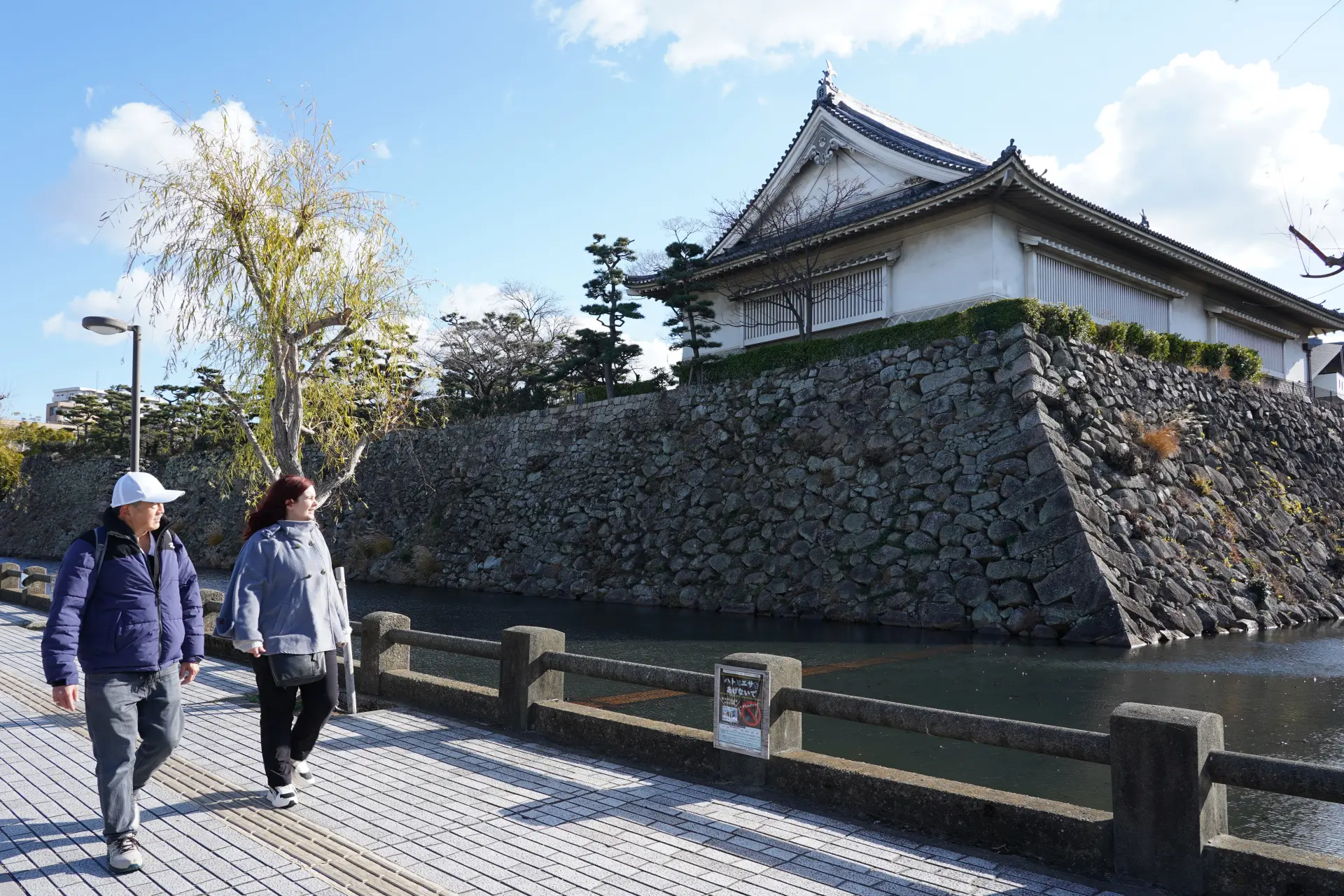
Kishiwada Castle, once the administrative center of the Kishiwada samurai domain led by the Okabe clan, boasts a reconstructed main tower (1954) surrounded by picturesque moats and stone walls. Visitors can explore the local exhibition rooms for historical items housed within the tower on the first and second floors, as well as enjoy panoramic views of the city from its top floor.
Kishiwada Danjiri Matsuri
Renowned for its thrilling Danjiri Matsuri, Kishiwada hosts this annual festival in mid-September (sea-side) and mid-October (mountain-side). 4-meter-Tall wooden floats, known as "danjiri," are pulled through city streets at high speeds, creating an exhilarating spectacle. Adding to the drama, a man called “daikugata” performs dynamic dances atop the racing floats. The evening festivities showcase the floats- slowly at this time-, adorned with paper lanterns, parading through the city’s illuminated streets.
Kishiwada Danjiri Hall

Located near Kishiwada Castle, this hall provides an immersive introduction to the Danjiri Matsuri. Visitors can view intricate wood-carved floats, festival implements, and a video showcasing the event. Interactive exhibits allow guests to wear a festival happi coat, pose on a danjiri mockup, or try festival instruments like taiko drums and gongs.
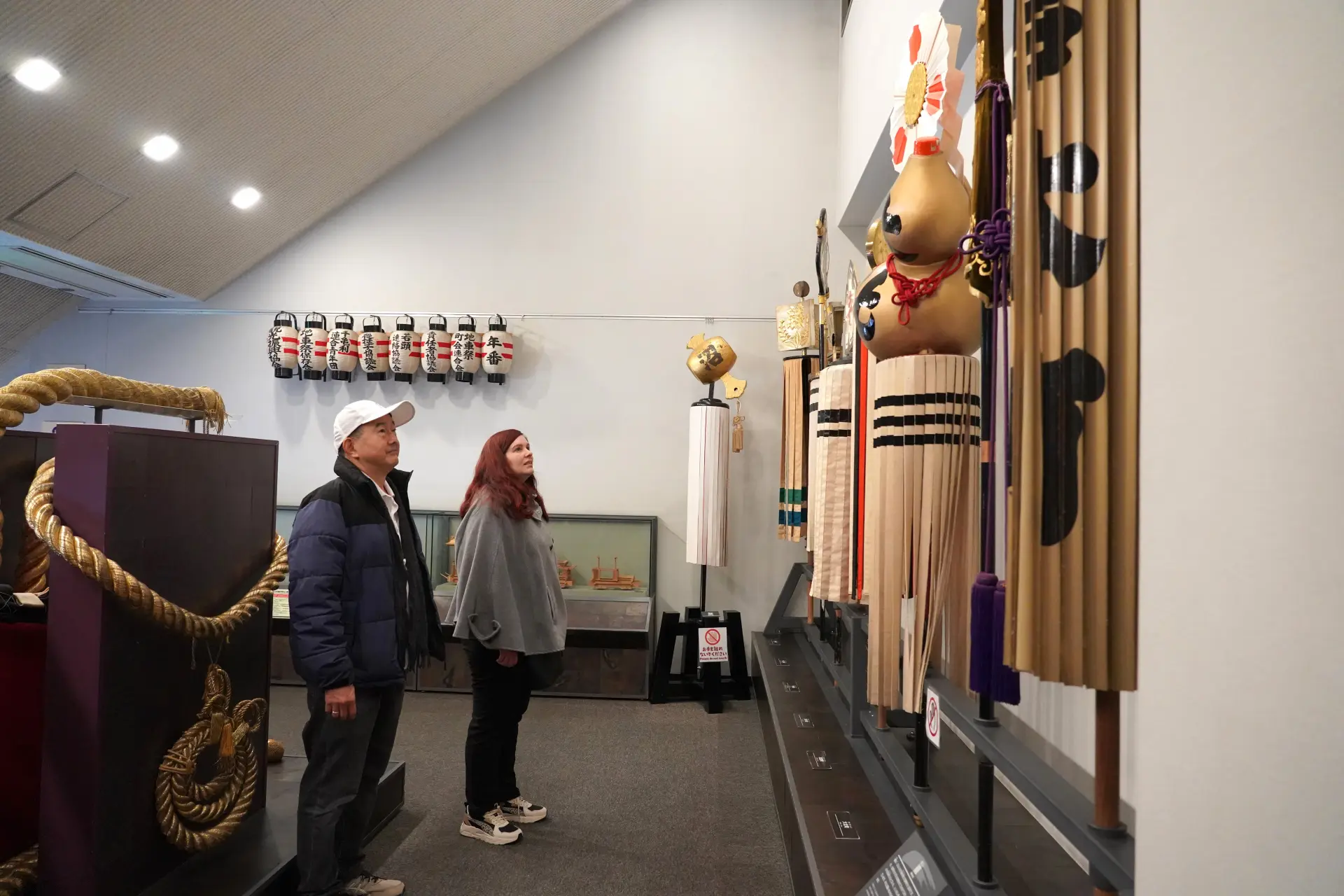
Lunch at Kofuan

Kofuan, a unique restaurant near Kishiwada Castle, doubles as Sugie Noh Gakudo, Osaka Prefecture’s oldest Noh theater (established in 1917). When not hosting Noh performances, the theater transforms into a serene dining space. Guests can savor traditional Japanese cuisine while admiring the Noh stage, complete with authentic masks and beautiful backdrop paintings of pine trees, plum blossoms, and bamboo.
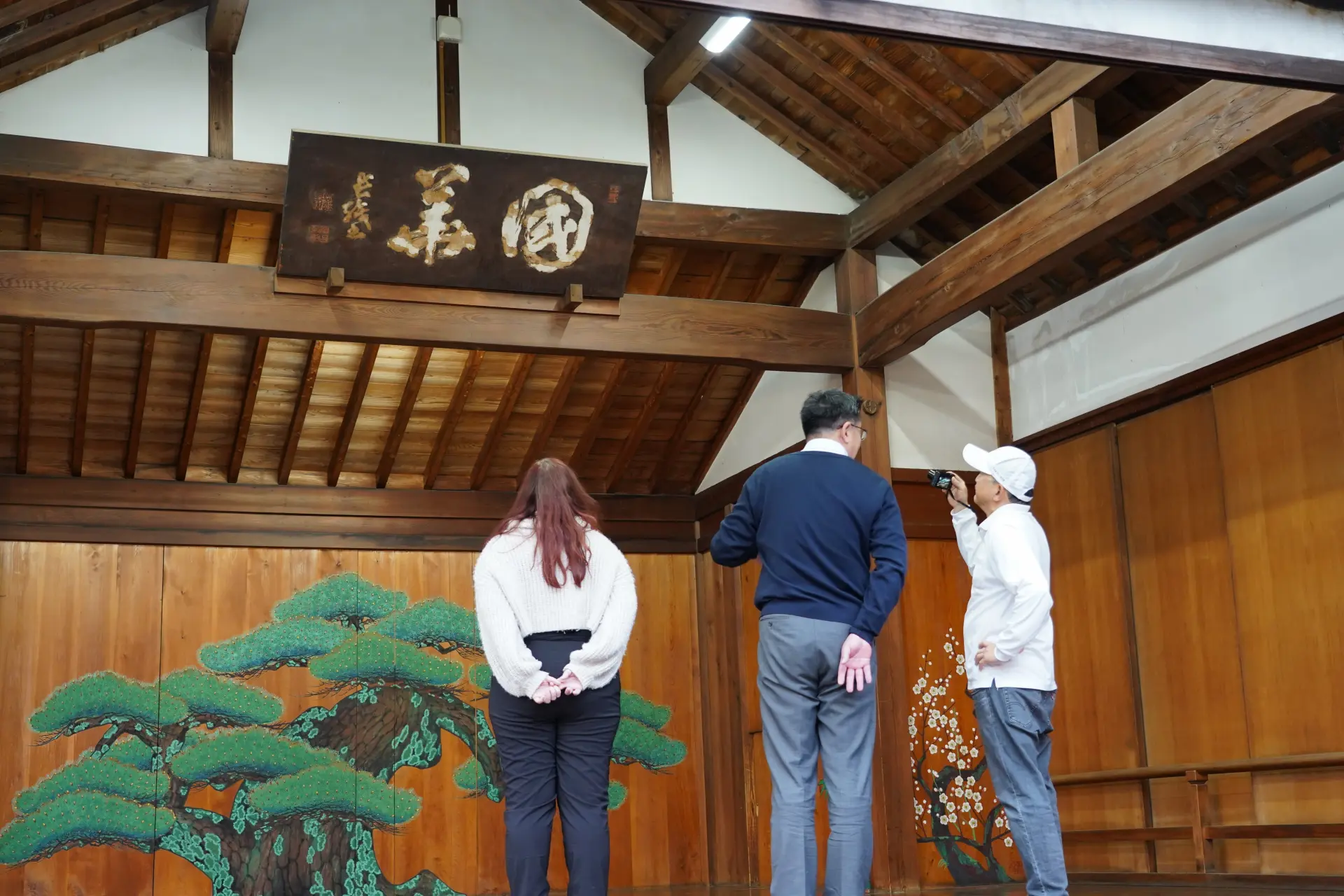
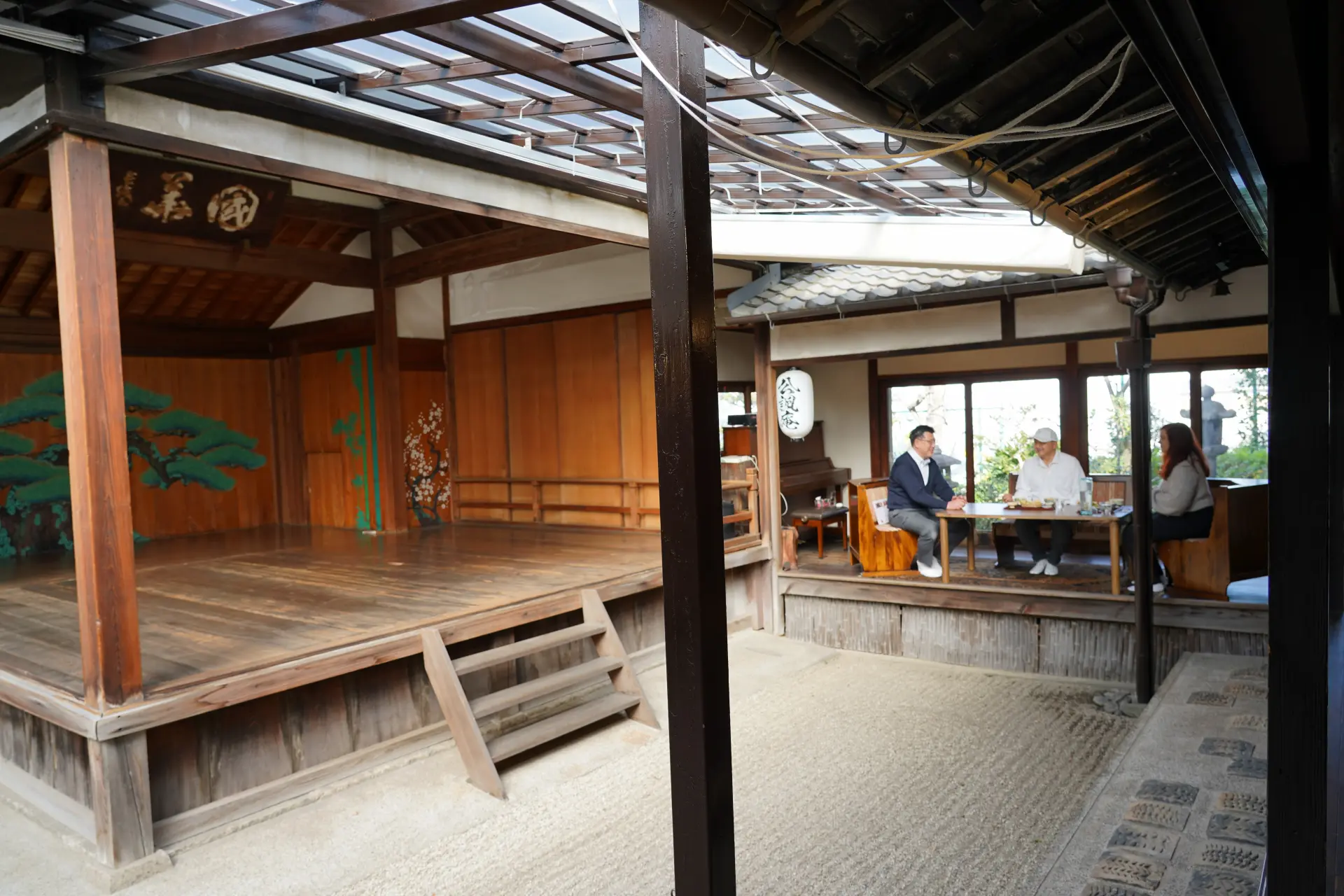
Samurai Cosplay
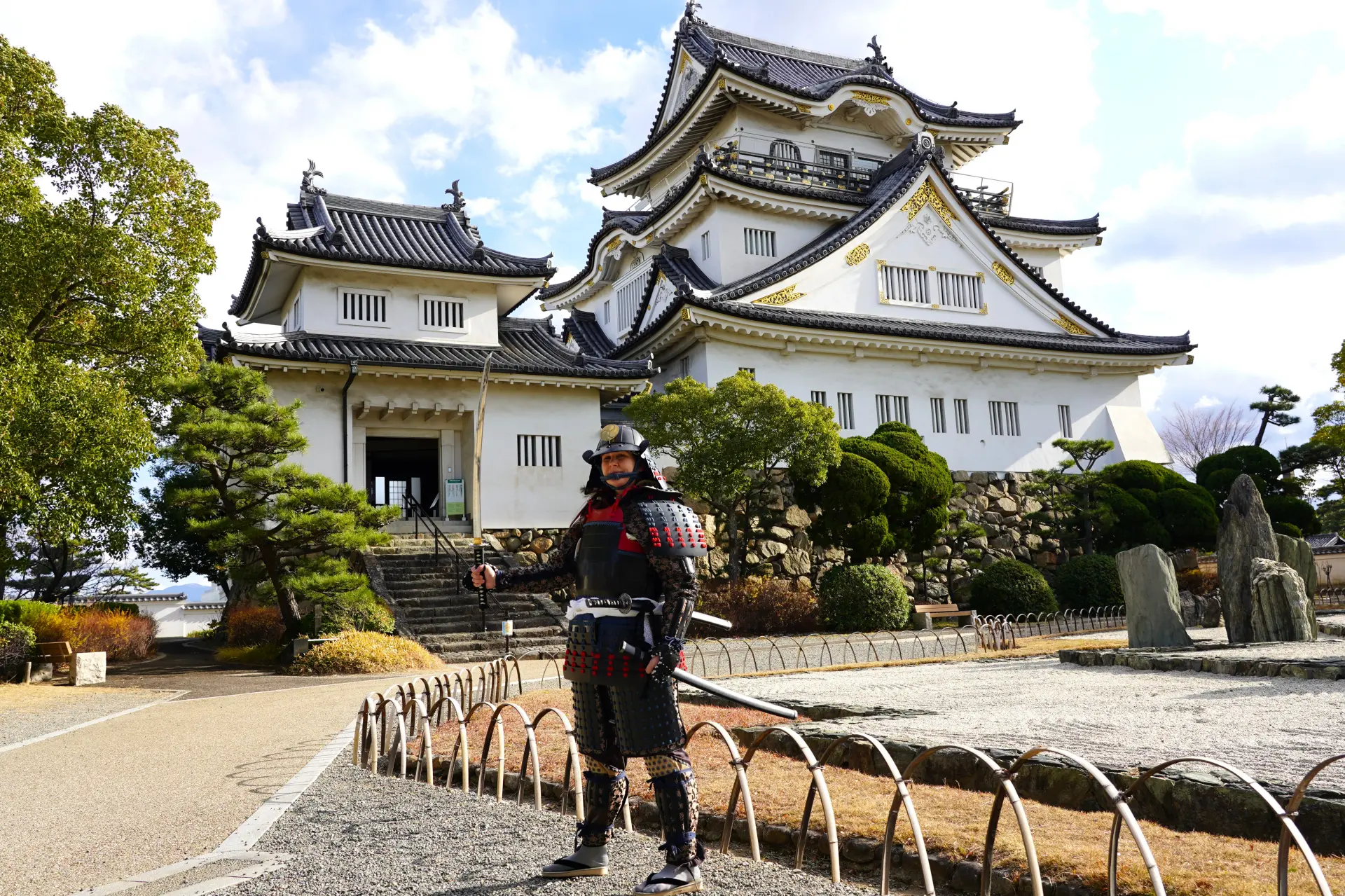
The Kishiwada Ninomaru Square Tourism Exchange Center offers a memorable samurai cosplay experience. Visitors can don full armor like a military commander, including a helmet and sword (dull-edged), and take photos around Kishiwada Castle, Ninomaru Castle, and nearby Kishiki Shrine.
Kishiki Shrine
This Shinto shrine, dedicated to the Sun Goddess Amaterasu, is a key site during the Danjiri Matsuri. Located near Kishiwada Castle, it’s a serene spot to explore.
Star Gate Hotel Kansai Airport (Izumisano City, Osaka)

End the day at this four-star high-rise hotel near Rinku Town Station and Kansai Airport. Spacious rooms offer breathtaking ocean and city views, while the 54th-floor restaurant serves a delectable breakfast buffet with panoramic scenery. Nearby shopping options include premium outlet malls.
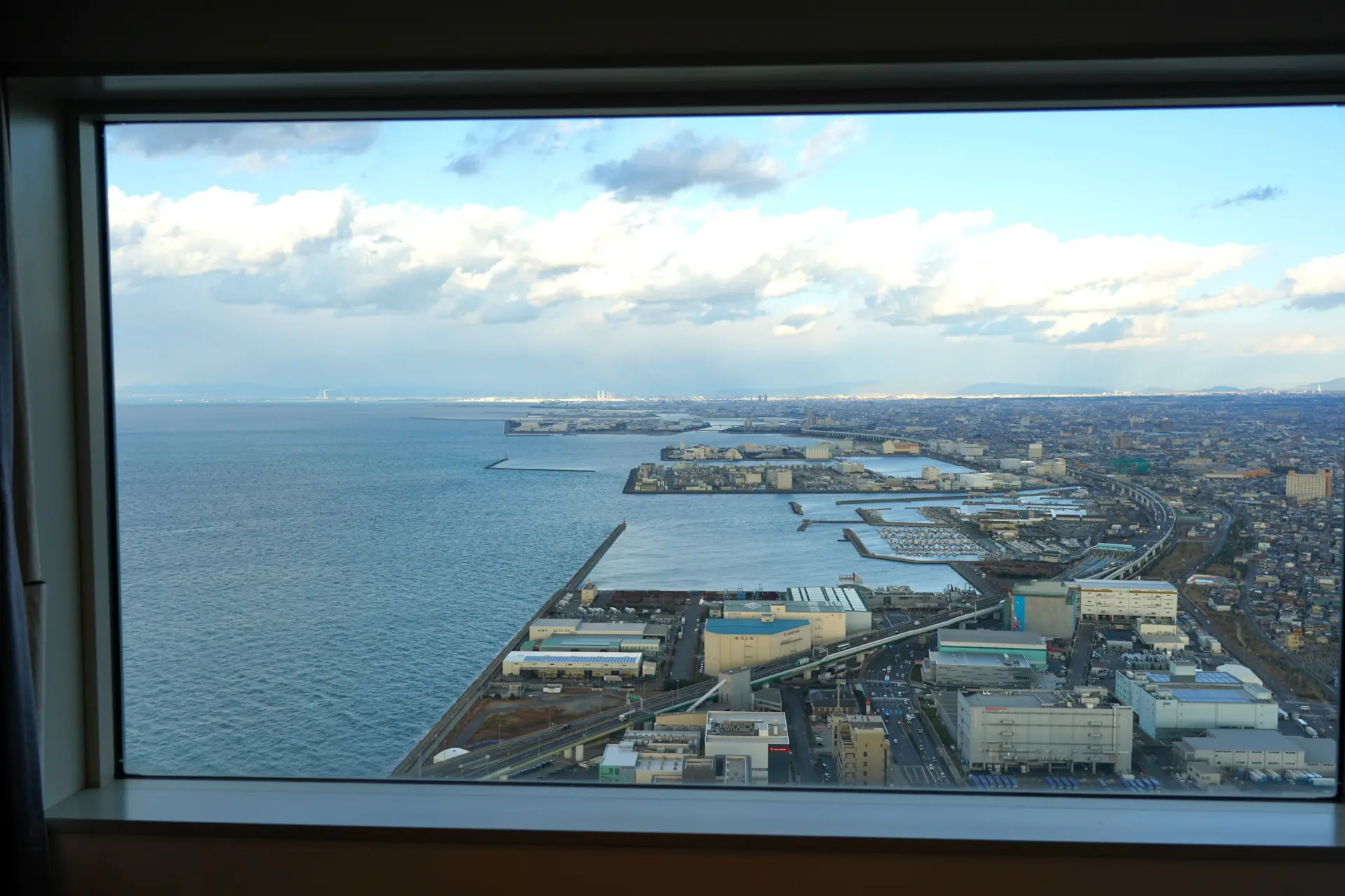
Day 2: Discovering Tokushima
Tokushima City
The capital city of Tokushima Prefecture, located in the eastern part of Shikoku, Tokushima City, has a unique culture fostered by its climate and history, including the Awa Odori and Awa Ningyo Joruri.
Awa Odori
The Awa Odori, a Bon dance with a history spanning over 400 years, originated in Tokushima and is now held across Japan as part of regional revitalization efforts. The entire town becomes immersed in the excitement of dancing, with various performances such as lively street dances where dancers move through the town and elegant, graceful female dances as well as bold and free-spirited male dances. In Tokushima City, the birthplace of Awa Odori, the festival is held for five days from August 11th to 15th. The Awa Odori Hall, where visitors can enjoy Awa Odori year-round, is also located in the city center.
Travel to Tokushima

After checking out from the hotel, take a train to Wakayama Port, followed by a scenic 2-hour, 15-minute ferry ride to Tokushima Port. From other parts of Japan, using buses and trains are good options.
Cycling in Tokushima
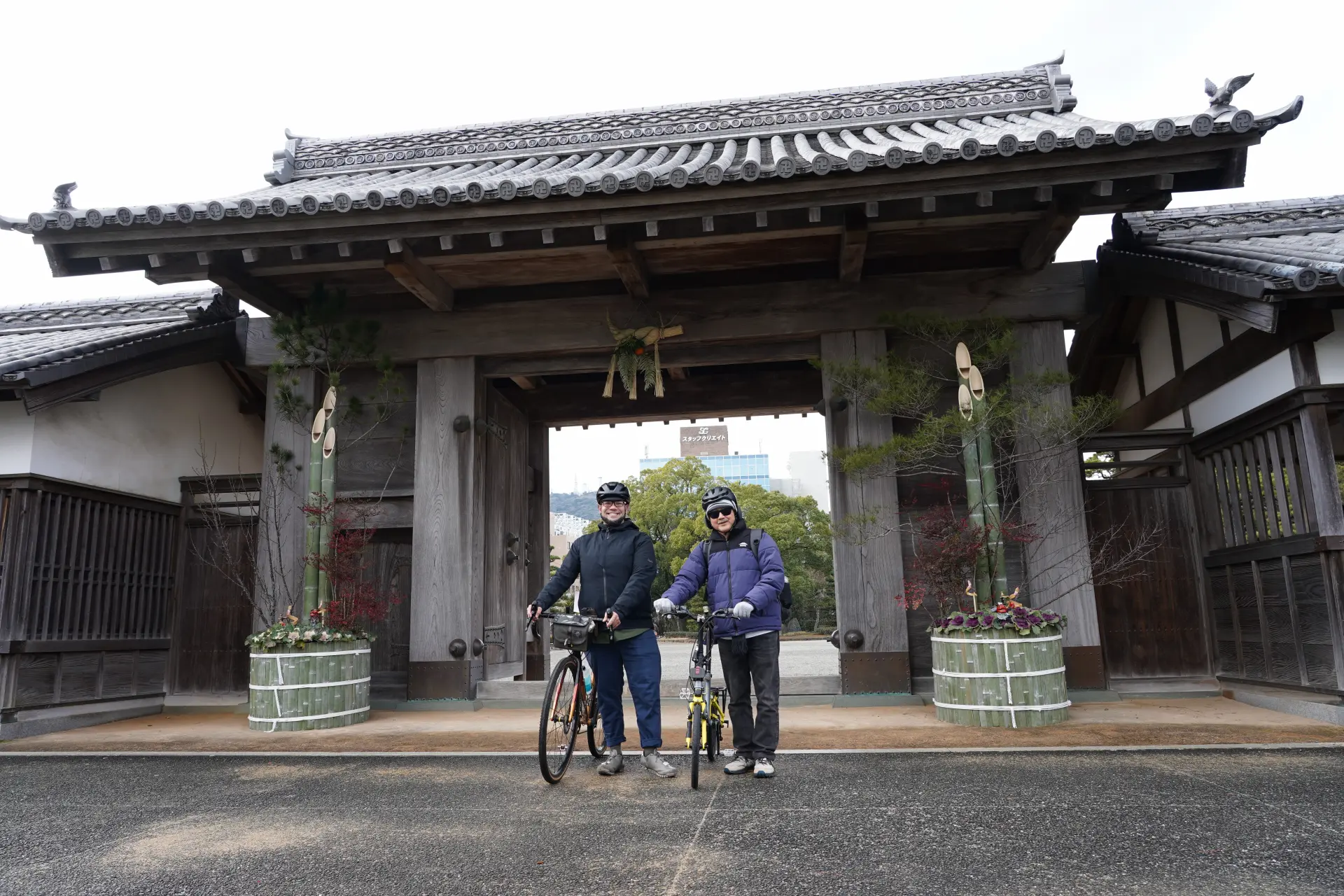
On this two-hour tour of the city's tourist attractions, including Tokushima Central Park established on the ruins of Tokushima Castle, you will discover new local attractions with a guide who has in-depth knowledge of the area.
Wada-no-ya Mochi Snack Break
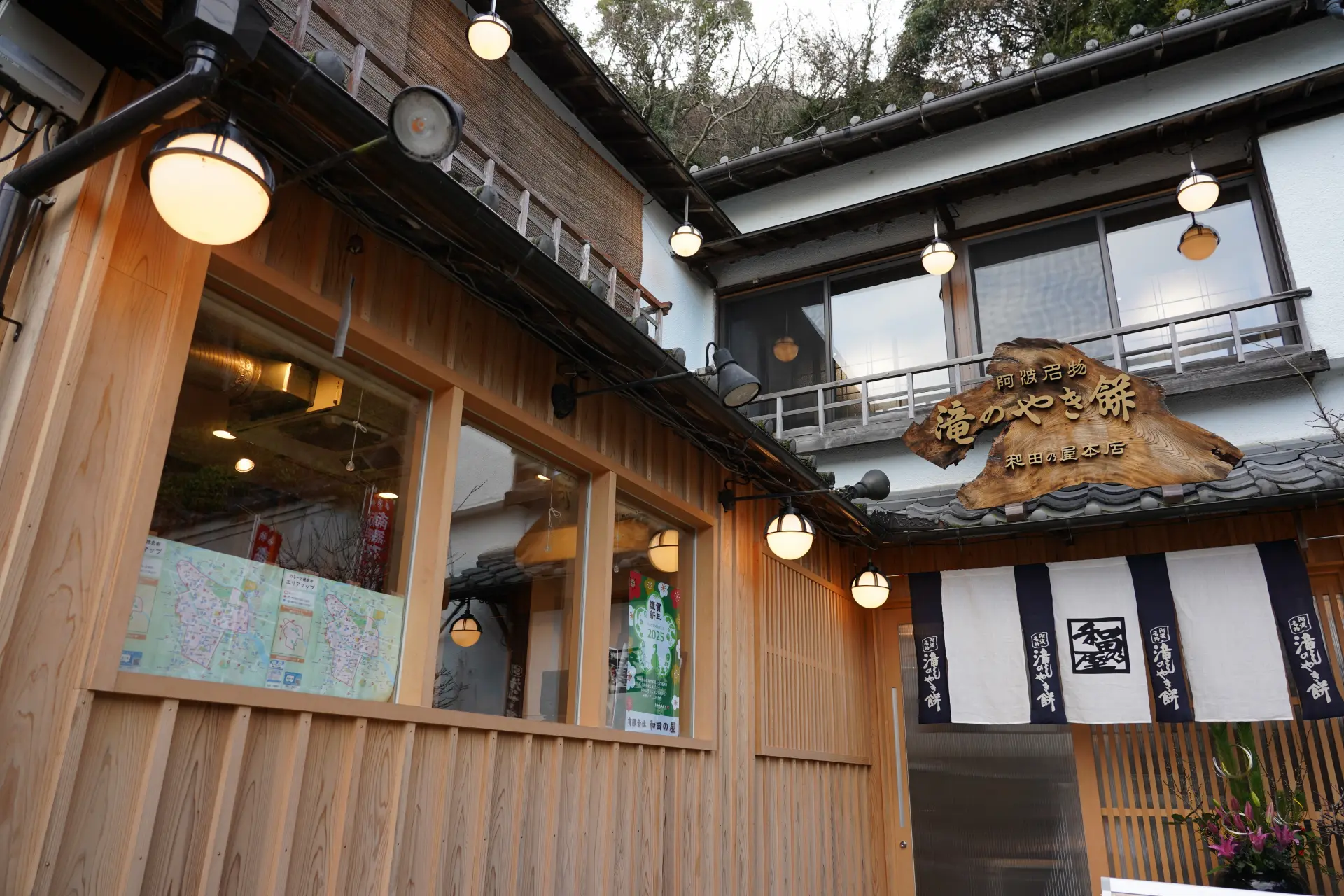
Enjoy a break at Wada-no-ya, a historic eatery known for its Taki no Yakimochi rice cakes, a favorite confection of Tokushima’s feudal lords. Despite its 400-year history, it remains committed to the same methods and materials that have not changed. These chewy treats, filled with sweet azuki bean paste, come in plain, matcha, and sesame flavors. Pair them with matcha tea while admiring the nearby waterfall at the base of Mt. Bizan.
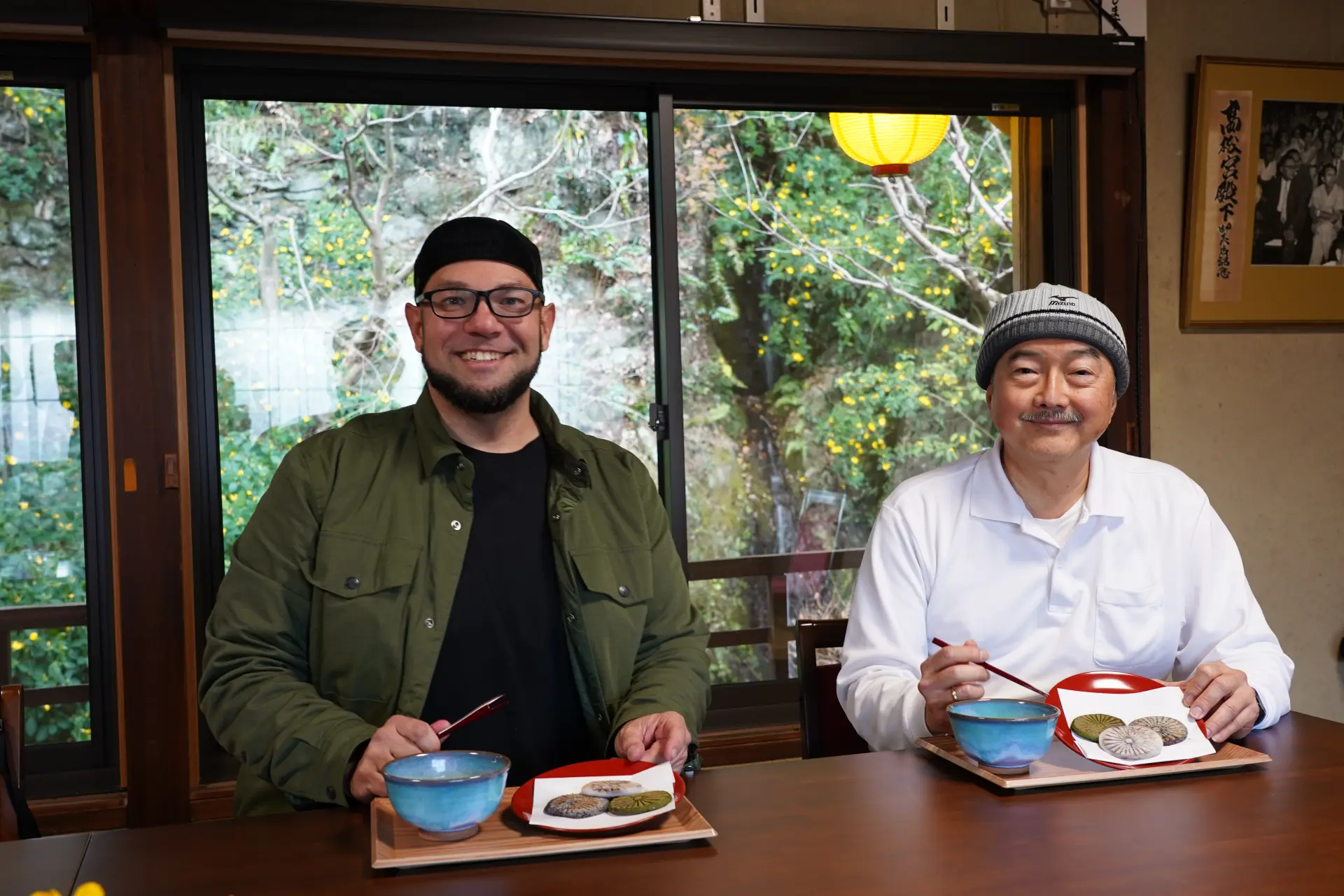
Awa Odori Kaikan Hall
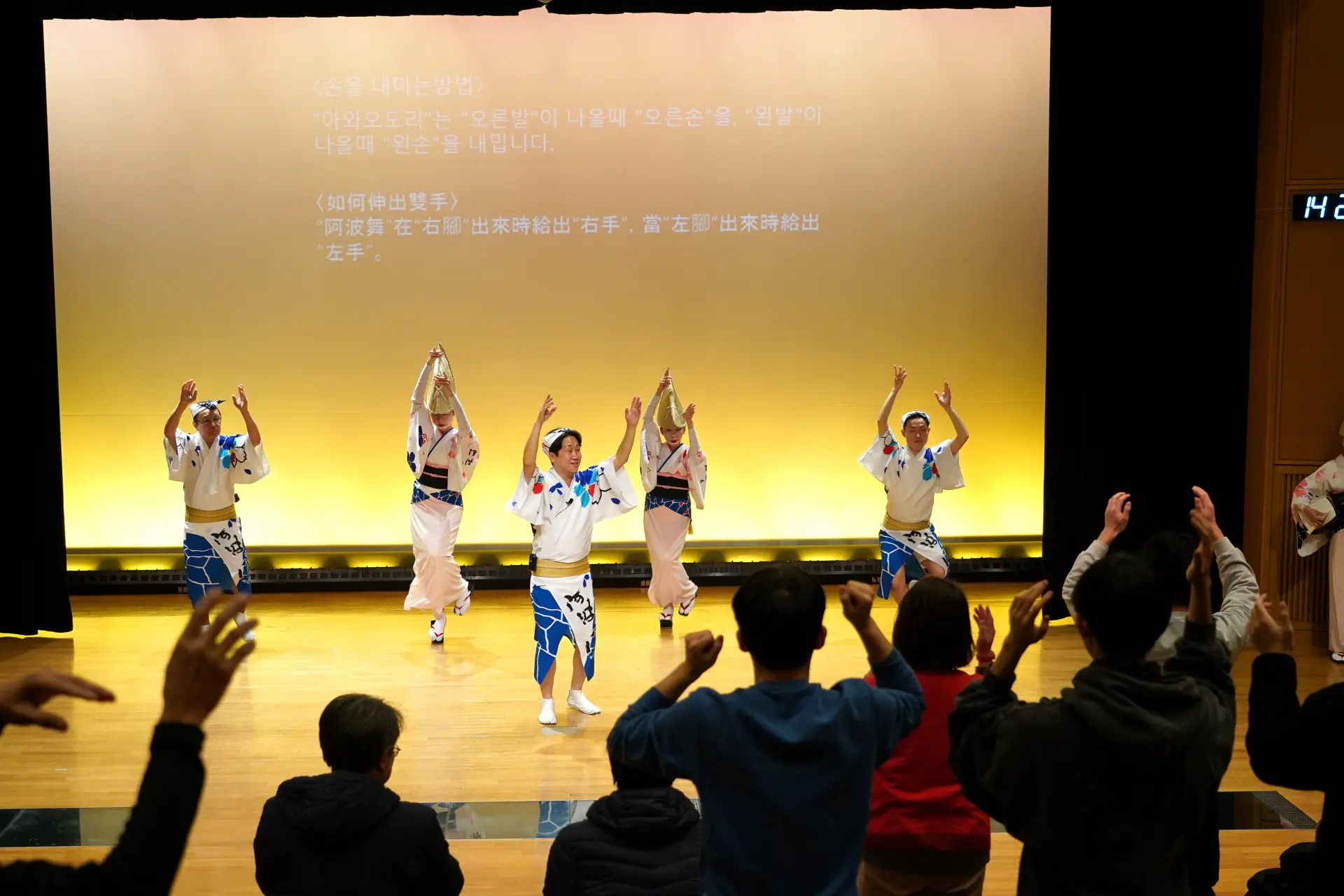
Experience a live Awa Odori performance at this hall, complete with audience participation and interactive exhibits. Guests can try festival instruments or learn dance steps, making it a fun and immersive cultural experience. The bottom floor also has a wide range of souvenirs for sale.

AoAwo Naruto Resort

Stay at this luxurious beachfront hotel in Naruto. From the spacious guest rooms, you can enjoy an ocean view, and relax and unwind from your travels in the outdoor baths or the observation bath. Spacious rooms feature ocean-view balconies, and communal hot spring baths provide ultimate relaxation Evening Awa Odori performances by the troupe offer another glimpse of Tokushima’s cherished tradition.
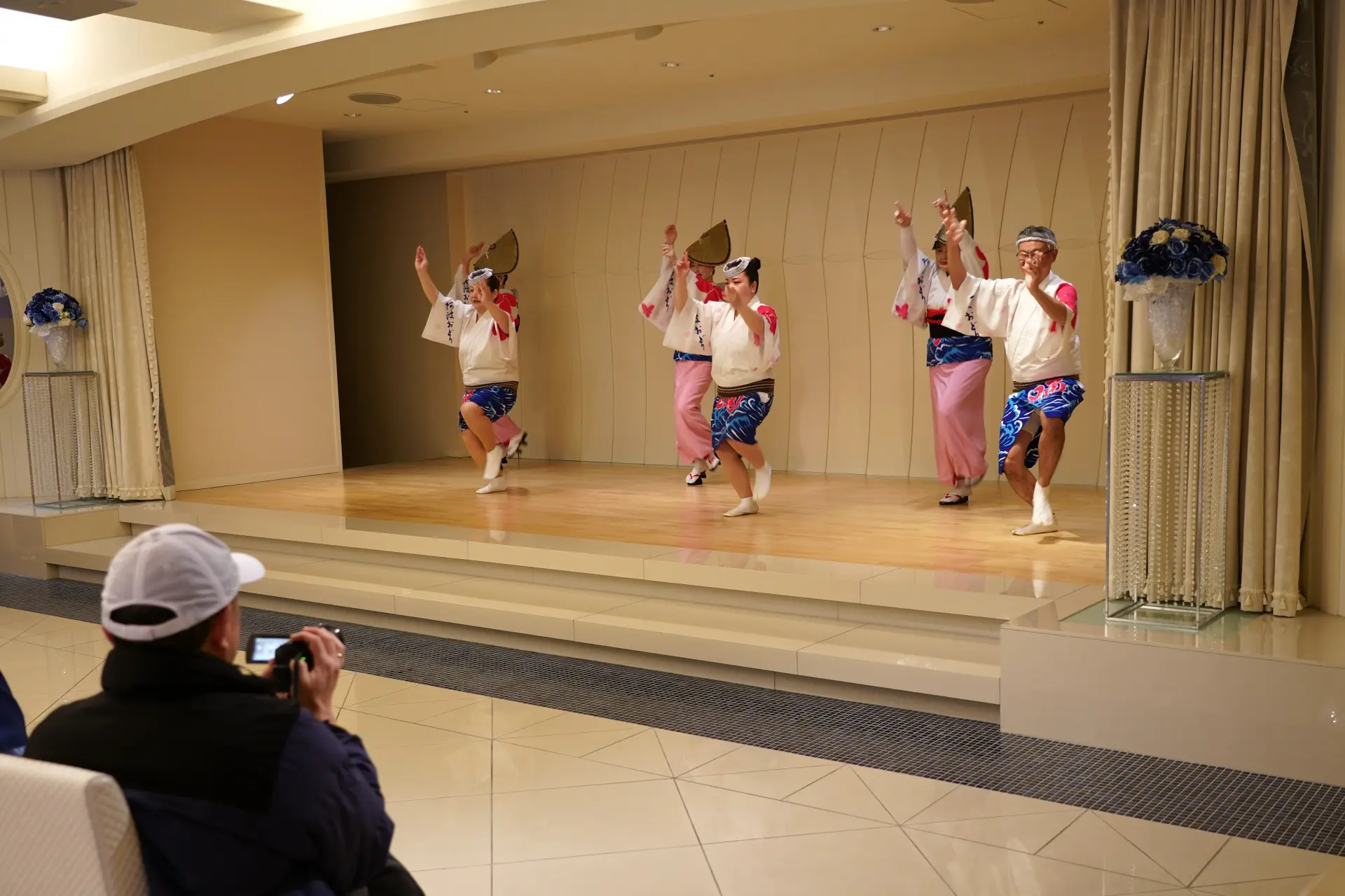
Day 3: Naruto and Tokushima
Naruto Whirlpools
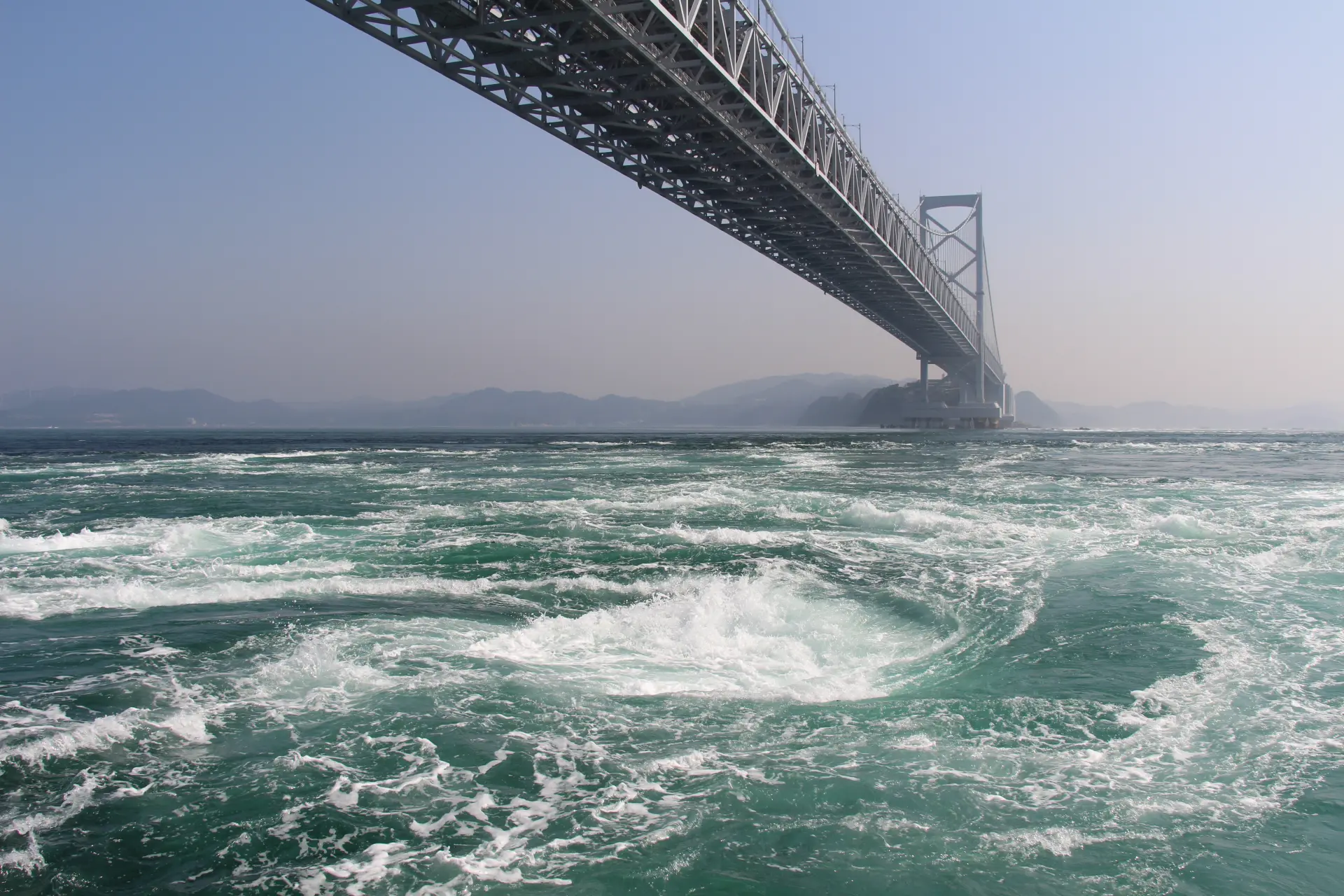
Visit Naruto to witness the spectacular tidal whirlpools of the Naruto Strait, some reaching up to 20 meters in diameter. You'll have the opportunity to ride a boat out into the strait and get a great look at the swirling water. The Uzu-no-Michi Whirlpool Walkway on Onaruto Bridge offers stunning views through floor windows, stretching 450 meters 45 meters above the water.
Naruto Park
Naruto Park is a popular spot where you can enjoy beautiful views of the Naruto Strait, famous for its whirlpools, and the Great Naruto Bridge. It is also known as one of the world's three major tidal currents.
Awa Jurobe Yashiki Theater and Museum

Returning to Tokushima City, let's visit the "Awa Jūrōbe Yashiki," where you can experience the traditional Awa Ningyo Joruri, which has been designated as an Important Intangible Folk Cultural Asset of Japan. Awa Ningyo Joruri has a history of about 400 years, and its craftsmanship is stunning as puppets are manipulated to express even the subtle changes in characters' emotions, accompanied by the emotional storytelling of the tayū (narrator) and shamisen music. English and Japanese subtitles are available, allowing not only international visitors but also Japanese people who may be unfamiliar with traditional performing arts to enjoy the performance. Additionally, in the exhibition room within the facility, you can learn about the history and techniques of Awa Ningyo Joruri through displays of puppet heads, costumes, tayū and shamisen instruments, as well as videos.
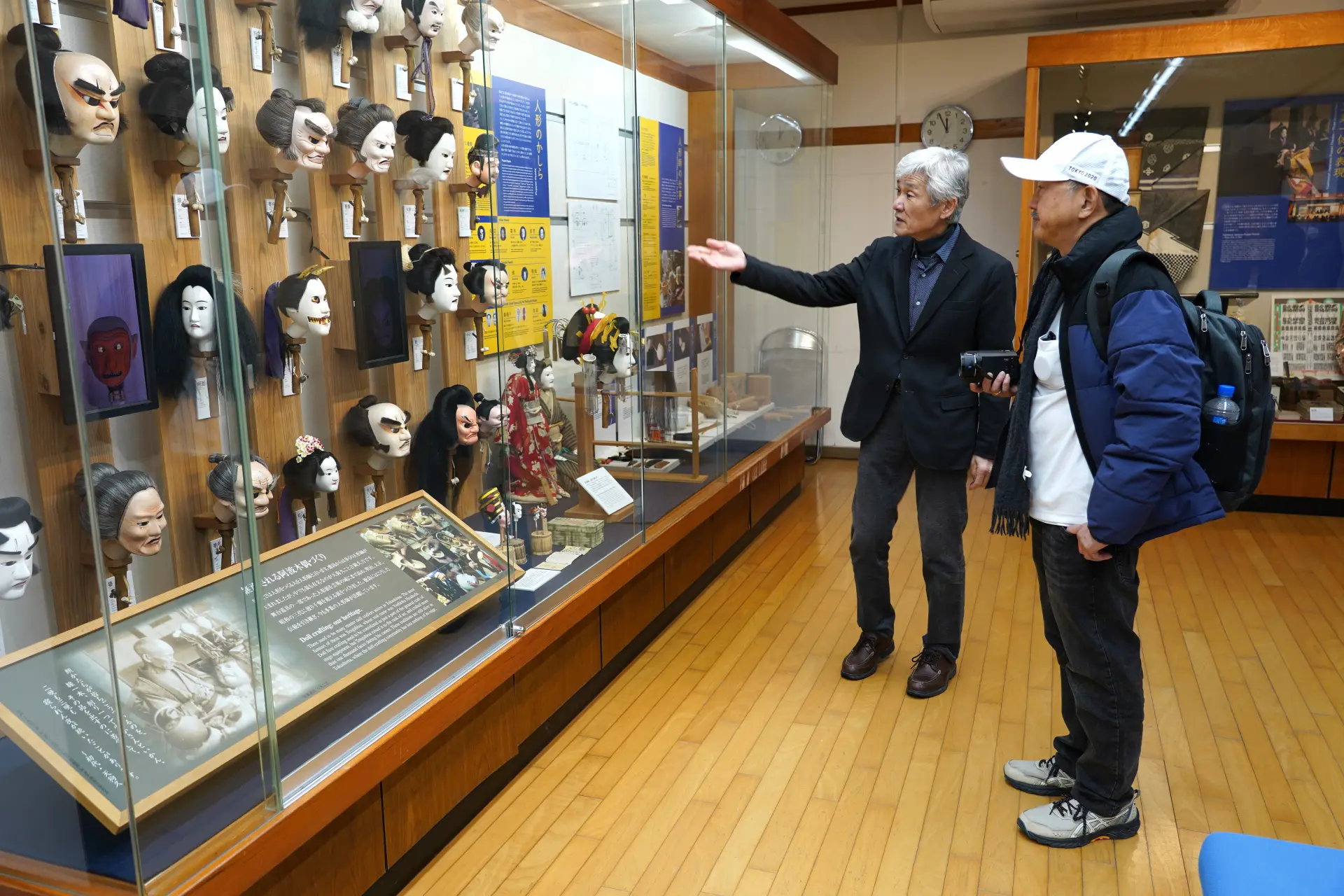
Aizumicho Historical Museum Ai-no-Yakata
Conclude the tour with a visit to Aizumi Town’s indigo museum. You can learn about the history of Awa indigo, which once thrived in cultivation and spread across Japan, and even experience making your own indigo-dyed handkerchief. The fertile soil brought by the floods of the Yoshino River, one of Japan's three great turbulent rivers, along with the warm climate, allowed for the cultivation of Awa indigo. This, along with trade in indigo, facilitated cultural exchanges with regions across Japan, which played a key role in the development of cultural traditions such as the Awa Odori and Awa Ningyo Joruri..This hands-on activity offers a memorable connection to Japan’s artistic heritage.
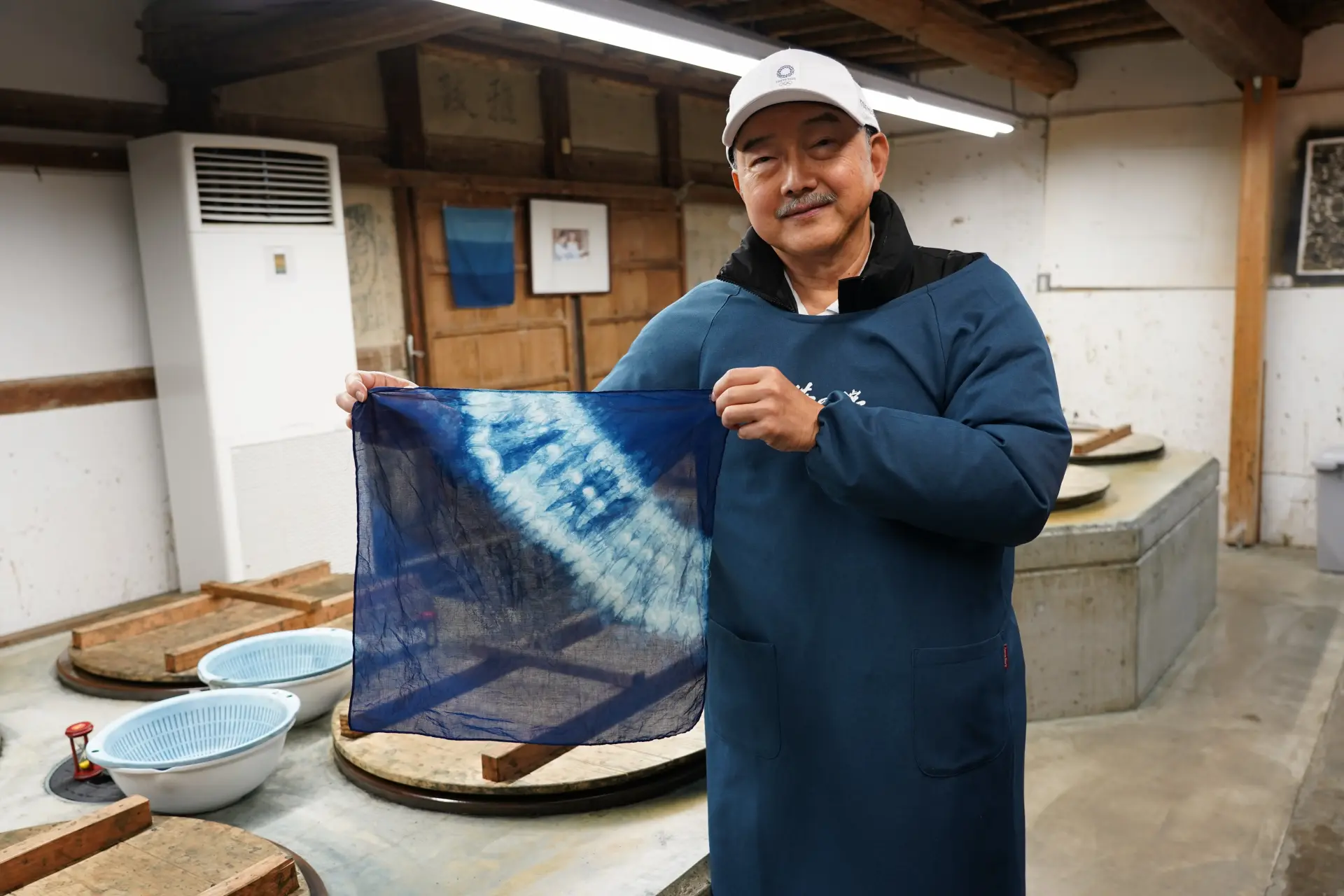
Check also...

A 3-Day Journey Along the Path of History and Culture: Outlining the Saigoku Kaidō from Osaka
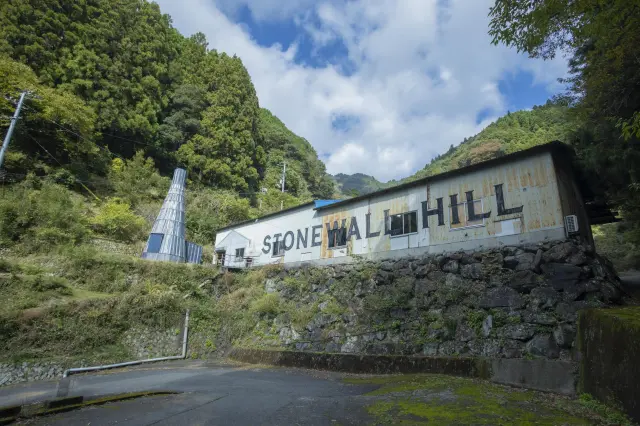
Tokushima: A Journey into Slow Living in the Mountains of Tokushima
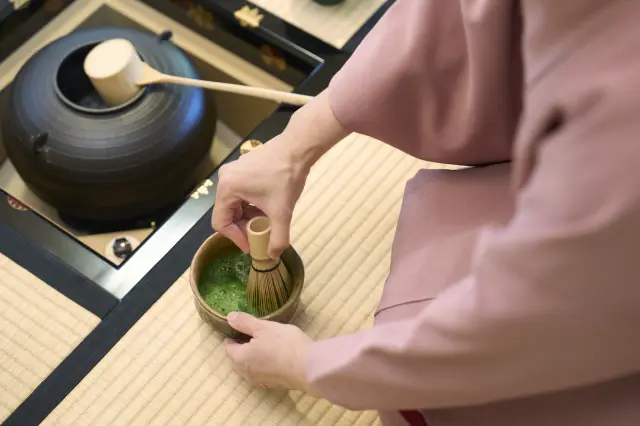
Osaka: A Journey Through Traditional Osaka

Villages depicted in Tabihikitsuke and two paintings~Landscape of Hinenosho, a manor in medieval Japan~

Home of the Indigo Dye in the Awa region~A journey to a production site of superbly deep blues, attracting those from all over the country~

Japan’s Oldest National Highway with a History of 1400 Years: Takenouchi Kaido /Yokooji

Henro〜The Pilgrimage Route and 88 Temples of Shikoku 〜


